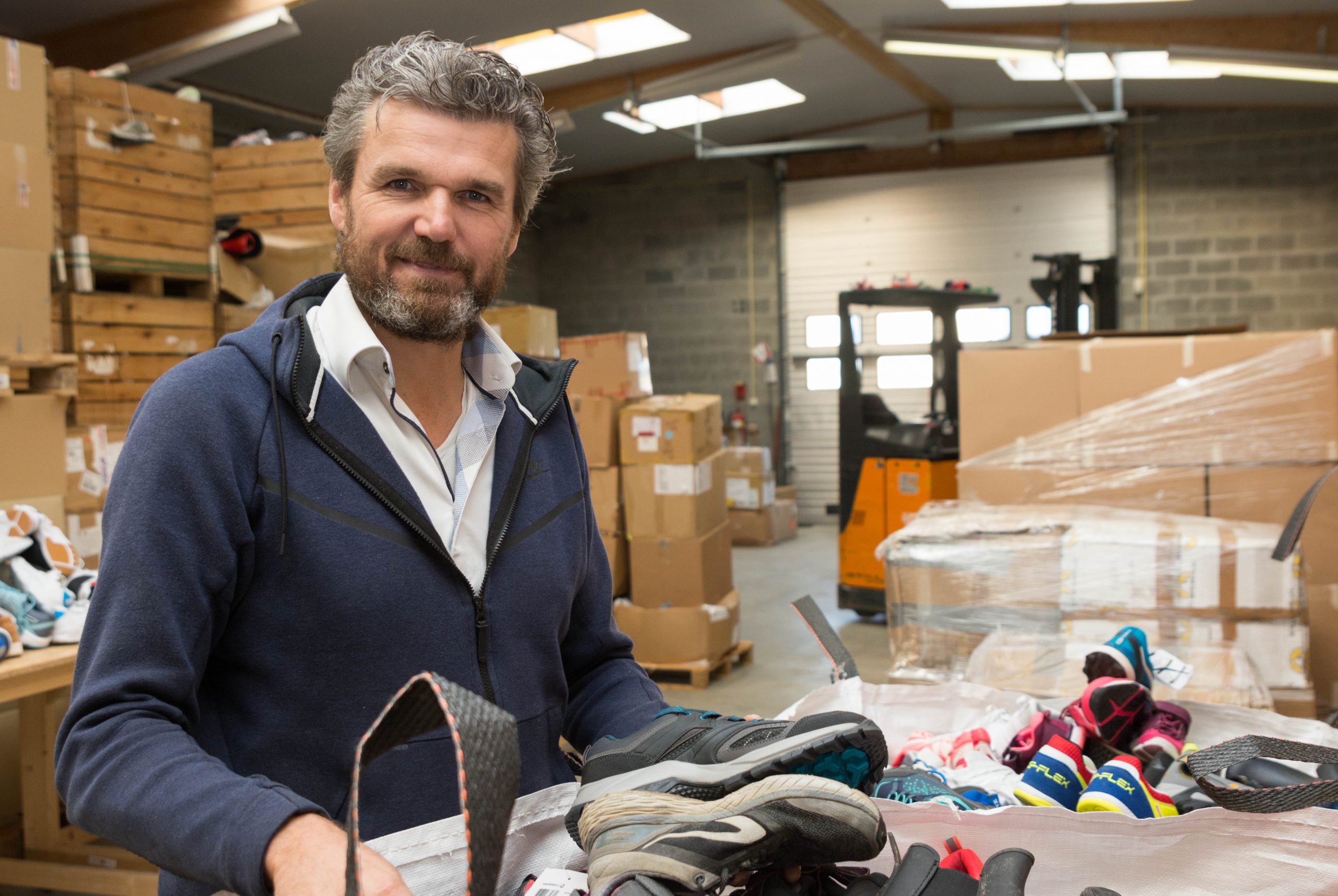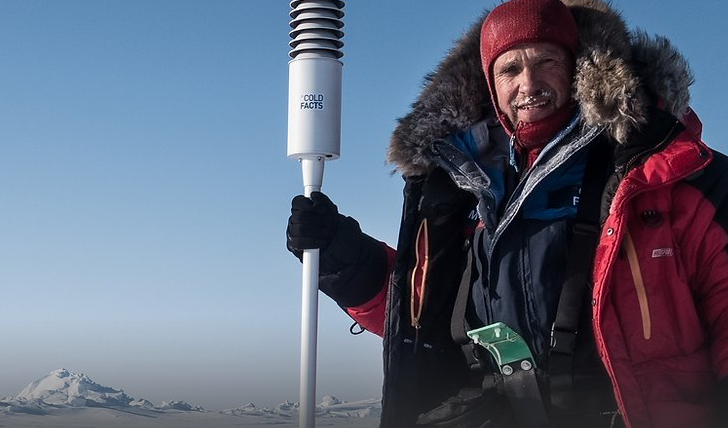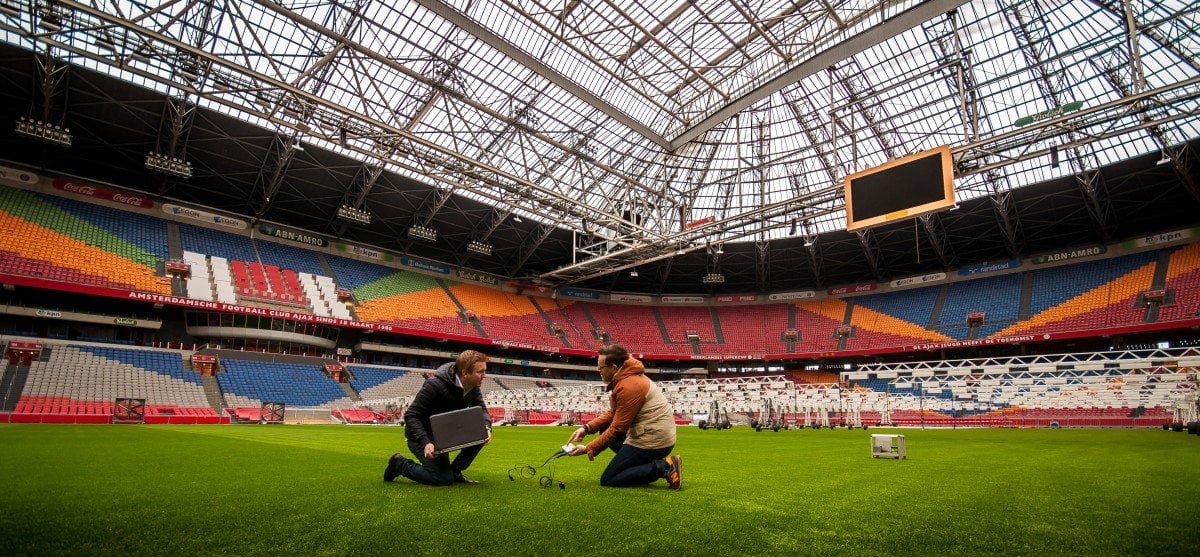
Every day there are 65 million pairs of new sports shoes and sneakers in the world, according to David Uijttewaal, co-founder of FastFeetGrinded. “That’s billions each year and of those, only two percent are recycled.” Therefore, these types of shoes are absolutely unsustainable. That’s why the ex-marine and his business partner Danny Pormes want to bring a shoe on the market that is made entirely from recycled (shoe) materials. Both met thirty years ago in the Dutch Marine Corps and travelled the world together for about nine years. The men continued to work together after the navy. They are like a pair of cowboys chasing their dream of a 100% recycled shoe: “It won’t be a high performance sports shoe, but it will definitely be another shoe.”
How did you come up with the idea?
“I supply running shoes to the government together with my partner Danny Pormes. We personally measure these on everyone and started doing that twelve years ago. Three years ago, the question arose as to what we were actually doing in terms of corporate social responsibility. “Nothing”, we said at the time: “We just supply shoes.” But because of that question, we came up with a plan to recollect the footwear we supplied, disassemble them and process those parts into new raw materials. The first product was a floor made of pulverized midsoles. The floor is now in some Runnersworld stores, on children’s playgrounds and on a Decathlon basketball court.”

“The rubber in a shoe is only sixty grams, so you need a lot of shoes for a floor like this. Our goal is to re-use the whole shoe and turn it into a new shoe. We’re well on our way with that. We make laces from the upper part of the shoe, we use the shanks for making yarn. Which we knit a shoe from. We’ve already made our first completed shoe.”
How innovative is a fully recyclable shoe like yours?
“So much is happening. One example is an Adidas shoe made from fishing nets. But just 2% of the material is made from fishing nets. We don’t know what else it’s made up of. That’s also the problem, you can’t read anywhere what it’s also comprised of. For example, they say that the Veja shoe brand is reasonably sustainable. If 4% of the sole is made from Amazon rubber, what makes up the other 96%?
One half of our laces are made of PET bottles and the other half of used shoes. We really want the whole shoe to be made from recycled material.
Of course you also have textile collectors who sell all kinds of stuff. They earn, let’s say, 80 cents per kilo. We’ve collected loads of shoes as well. But where do those collected kilos go and what happens to them?
And people are not interested in all those used shoes in Africa or Eastern Europe. They have been walking on flip-flops all their lives. They’re really not going to all of a sudden wear shoes that we once paid €200 euros for. As it is, a lot of the clothes that are sent to Africa just come back again by ship.”
What drives you to keep on going?
“It’s a lot of trial and error, pioneering work and we run into a lot of closed doors. For example, we hear from the Nikes and Adidases of this world that it is not possible to do what we do: make a fully recycled shoe. We also often get to hear ‘no’ on a subsidy proposal or a loan application.
We want to prove that it is possible. No mountain is too high for us. Maybe that has to do with our background in the marines. We want to show that it can be done. We’ll do that by keeping our eyes on that speck on the horizon. This shoe is on its way. That’s what it’s all about to us, not just about making a lot of money with it.
We’re already working with companies like Runnersworld, Intersport and Decathlon. They all embrace what we do. They collect shoes for us, and other stuff.”

“We also get enquiries on a daily basis from companies asking if we can help. For example from Tommy Hilfiger, but also from Chanel or Louis Vuitton. I met with Tommy Hilfiger the other day, that company wants a circular product in 2020. Our shoelace has been taken on there now, since nothing else was ready there yet.”
How do you finance your start-up?
“By ourselves. Partly because the government is a good customer for us. We supply shoes to the military and the justice department every day. There’s no other store that can do that. This provides a certain revenue stream.
Once we actually have a product, we’ll then take the next circular step. The Ministry of Defence buys those shoes and returns them to us. We turn them into new shoes.
There are millions of subsidies available in the circular economy. But you have to get that money. And if you get it, there is often heaps of paperwork attached to it for every quarter. That’s not for us. We’re a bunch of cowboys who just want to go ahead and do it.”
What do you mean by cowboys?
“Cowboys – because we don’t know anything about anything and we’re just figuring it all out by trial and error. We’re also economical with our time. If we are in The Hague, at VNO-NCW or MVO Nederland in one of those glass towers and the conversation doesn’t lead to anything, we just get up and leave. We re wasting our time if there’s no real resolution.”
What can we expect from you in the coming period?
“Our machine which enables us to disassemble the shoe is almost ready, then we will be able to make our first pair of shoes. We’ll need other people for that too, and we’re looking for them close to our base. A textile factory in Twente is spinning the yarn for us. And we’re in talks with a supplier in Portugal with a view to actually start manufacturing the shoe Although we’d prefer to find a party much closer to home.”







